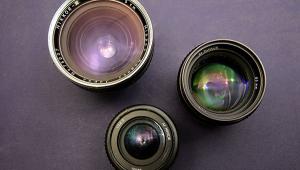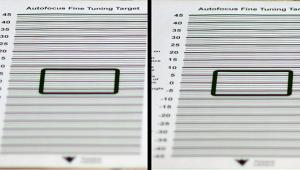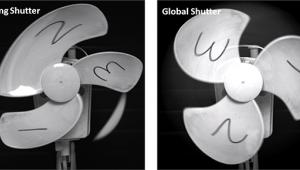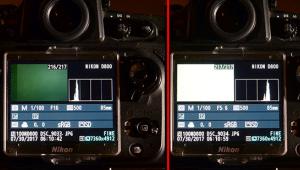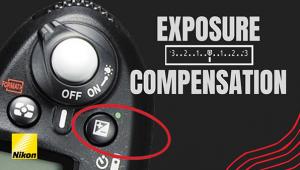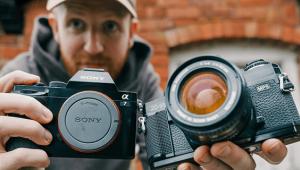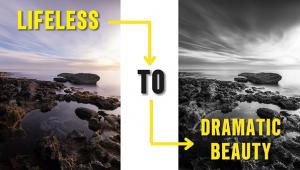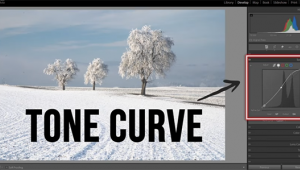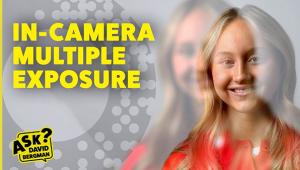How High Can ISOs Go?: Cameras Break the Noise Barrier with Ultra-Sensitive Chips

© Dan Havlik
Remember when Paul Simon crooned, “Mama, don’t take my Kodachrome away”? That classic film may have given you nice bright colors, but only on sunny days. In its early incarnations, Kodachrome’s film speed—its sensitivity—was 10, or slower than Homer Simpson.
Sensitivity is not just a social nicety. In photography, higher values allow you to get closer to every shutterbug’s dream: anything you can see, you can snap, no matter how much available light there is.
Changing the ISO as casually as you change f/stops is one of the many benefits of digital photography. And with every iteration of camera models, it seems the highest available ISO goes up and extreme low-light images look even better. Nikon’s D5 DSLR has a staggering maximum ISO in expanded mode of 3,280,000. It’s the current sensitivity champ and, I note, is more than 18 stops faster than the old Kodachrome. However, I also note that at ISO 3,280,000, the noise is acceptable only to the uncritical.
But really, what’s the ceiling on ISO ratings? Is there any limit at all? Will you eventually be able to shoot action photos of black cats cavorting in coal mines without a carbide lamp?
Here’s one path to an answer. Sensitivity depends on the performance of your camera’s sensor and the size of the pixels. Bigger pixels mean more sensitivity. Usually, the ratio of signal to noise in a pixel scales as its area. In other words, if you double the dimensions of a sensor’s individual pixels—making each twice as wide and twice as high—the sensitivity will double. Unfortunately, this will also halve the resolution in both dimensions. Instead of 7360x4912 pixels (Nikon D800), you’d have 3680x2456. A 36-megapixel camera becomes a nine-megapixel camera, and the amount of detail in the photos would drop by four as, no doubt, would sales.
Speed demons might think to go for a camera with a bigger imaging sensor. The chip in the Hasselblad H5D-200c is 44x33mm, which, when compared to a full-frame DSLR, is 70 percent greater area. That could, in principle, offer a 70 percent gain in sensitivity. But people who choose a larger format aren’t interested in a potential 2/3-stop boost in the maximum ISO. If they’re going to manhandle a bigger camera, they want the greater detail that the format can provide. They want more pixels.
So in the real world, a shift to substantially fatter pixels is not going to happen. Image quality dictates that small is beautiful.
Well then, what about the performance of the pixels themselves? Can they be made more sensitive, even at a given size?
Not a lot. CMOS chips are already more than 50 percent efficient—which is to say that the majority of the light hitting them produces a response. There’s also the influence of the camera electronics used to read out the pixels, and of course there will always be noise in this circuitry. But even if the electronics were perfect, you’d still be limited by the inherent performance of the sensor.
As an important aside, the very high efficiency of solid-state sensors is why digital imaging swept away film in all low-light applications (such as astronomy). Film emulsions were seldom more than 5 percent efficient. That is, typically only one in 20 light quanta (photons) that struck the film actually did anything! Fast films could be fast because they had large grains—the analog equivalent of bigger pixels.
OK, so here’s my rough-and-ready calculation of the maximum usable ISO you can ever expect. Think about the fastest film emulsion that anyone would dare to use for good-quality photos. I reckon that would be something like Kodak T-Max P3200. Not great image quality, but still acceptable. Film was 5 percent efficient, and eventually improved chips might approach 100 percent. That’s a factor of 20 improvement which, when multiplied by the film speed of P3200, results in a maximum, practical digital ISO of 64,000, give or take a factor of two.
There you go: 64,000. You may object that’s less than claimed for the Nikon D5, and of course it is. But remember: The D5’s staggering Hail Mary ISO is an extended mode option, akin to the 233 mph top speed of a BMW M6. It makes for nice ad copy, but you’re not going to use it. The non-extended ISO range for the Nikon D5 tops out at 102,400.
Bottom line: We’re nearing the limit of what’s possible in sensitivity without resorting to bigger cameras with bigger chips. Don’t throw away your carbide lamp.

Seth Shostak is an astronomer at the SETI Institute who thinks photography is one of humanity’s greatest inventions. His photos have been used in countless magazines and newspapers, and he occasionally tries to impress folks by noting that he built his first darkroom at age 11. You can find him on both Facebook and Twitter.
(Editor’s Note: Technically Speaking is a new column by astronomer Seth Shostak that explores and explains the science of photography.)
- Log in or register to post comments

